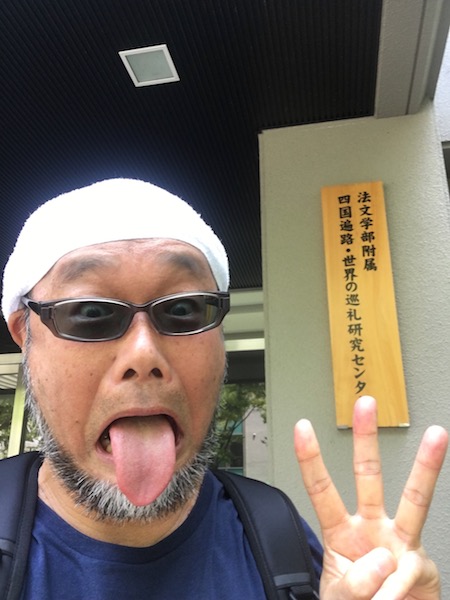AutumnPilgrimage, Nomadism and Tourism
巡礼とノマドと観光
In front of the Shikoku Pilgrimage and World Pilgrimage Research Center attached to the Faculty of Law and Literature, Ehime University, Shikoku-Japan(August 2, 2018.)
Autumn is, after all, the season for travel.
The purpose of travel is not only to refresh the body, but also to broaden one's horizons, to recuperate, and more positively, to heal and to wish for longevity. Needless to say, this is not only a Japanese phenomenon, but is common all over the world. Let's consider the therapeutic aspect of travel.
Pilgrimage, which has been practiced in many parts of the world since ancient times, can be understood as a journey to seek health as well as religious salvation. There are many forms of pilgrimage in which religious motives and therapeutic purposes are more actively combined. At the temple of Asclepius, the god of medicine, in Epidaurus in ancient Greece, pilgrims who were sick were said to have stayed in a sanctuary behind the temple and received divine favor and healing in their dreams. From excavations, it is known that sick rooms and mineral baths were built around the temple.
The relationship between healing spaces and bathhouses is important. The ancient Roman custom of bathing in public bathhouses spread throughout Europe as the Romans expanded their territory. Bathhouses are not only a place to recover from illness, but also a place to relax. Today's hot spring resorts in Europe have facilities for drinking, sunbathing, hydrotherapy, etc., and are integrated spaces that include hospitals, parks, theaters, and other cultural facilities, making them attractive travel destinations.
In Lourdes in the south of France, it is said that in the middle of the 19th century, the Virgin appeared to a young girl in a cave and gave her holy water to cure her illness. Today, Lourdes attracts more than two million pilgrims a year who come to pray for cures for diseases. In Japan, too, where fresh water springs, there are legends of religious saints, small offerings and shrines. In order to thank people for curing their illnesses, faithful believers sometimes build water intake sites. In this way, the number of people seeking blessings increases, and the place becomes a famous holy place, attracting more and more people.
Traveling is an activity that restores life to us.
Translated with www.DeepL.com/Translator (free version)
Copyleft, CC, Mitzub'ixi Quq Chi'j, 1996-2099
In the preface to his Critique of Pure Reason (1781), Kant fears nomads and skeptics. There is no doubt that Kant internalized the "vulgar peasant spirit" that makes him anxious when social bonds do not take root. Two centuries later, in A Thousand Plateaus (1980), Gilles Deleuze and Félix Guattari explored the possibility of thought without moorings from the perspective of their own nomadic theory.
Translated with www.DeepL.com/Translator (free version)

